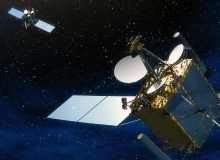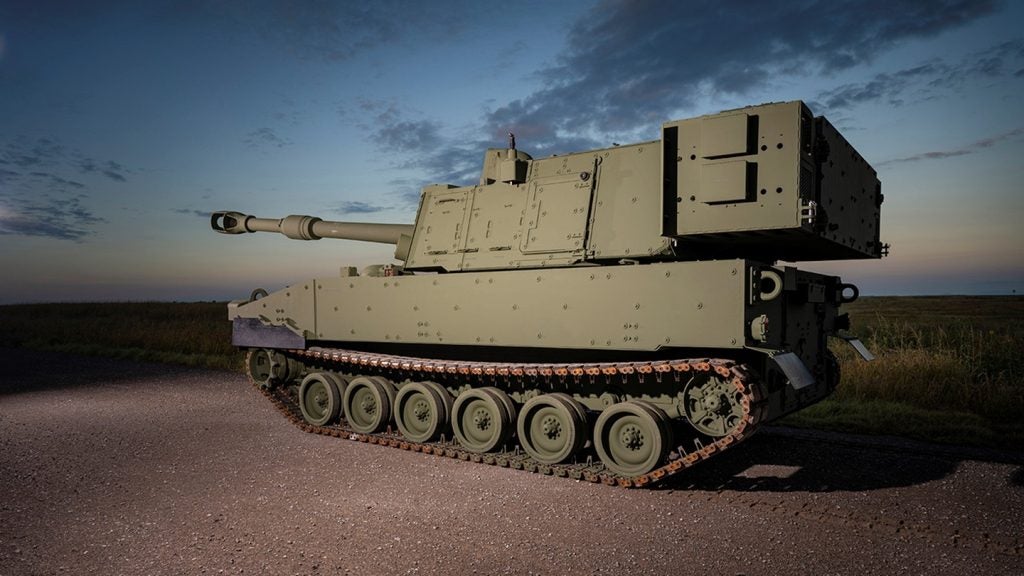
Looking at the headways of defence technology, it comes to no surprise that the wars of the 21st century could be dominated by an armaments race in space. Leading nations have long opened the battle for orbit, with warfare already relying heavily on space-based technology such as GPS, communication satellites, weather satellites and intelligence collection platforms.
Even though Star Wars-esque equipment, such as supersonic air devices and satellite-based missile systems capable of striking any target, are still some years away the race for the outer space is on.
Now, the field of competitors could be shaken up by a new strong force at the front. In June 2011, the European Space Agency (ESA) and European Defence Agency (EDA) notched a collaboration agreement that could defend Europe’s future in space.
Heralding a new era of space-based warfare, the accord is a vital step for Europe’s defence sector that will not only boost advancements in space defence technologies, but secure its position against fierce competition from the US, China and Russia and resolve organisational issues on an institutional level.
The partnership has been welcomed by both the defence and civilian industry and hope has grown once again that Europe could make steps in regaining its own sovereign capability in space. It not only combines the interests of two different space programmes to avoid duplication, but also reduces the cost of space activity in a period of cuts being made throughout.
See Also:
Explore common space synergies
"Space these days supports so many aspects of our national life and defence is definitely one of them," said Aerospace Defence Security (ADS) managing director of policy and public affairs Derek Marshall.
How well do you really know your competitors?
Access the most comprehensive Company Profiles on the market, powered by GlobalData. Save hours of research. Gain competitive edge.

Thank you!
Your download email will arrive shortly
Not ready to buy yet? Download a free sample
We are confident about the unique quality of our Company Profiles. However, we want you to make the most beneficial decision for your business, so we offer a free sample that you can download by submitting the below form
By GlobalDataThe trade organisation, which was formed from the merger of the Association of Police and Public Security Suppliers (APPSS), the Defence Manufacturers Association (DMA) and the Society of British Aerospace Companies (SBAC), represents the UK aerospace, defence, security and space industries.
"Space and satellite technology is not only the great secret of modern life but is a growingly vital service to militaries all over the world," he says. "Communications via satellite and the imaging from space have become absolutely vital to war and security efforts that defence forces undertake these days."
With their new partnership, EDA and ESA mainly aim to explore the contribution space assets could make to the development of European capabilities in crisis management and the common security and defence policy. After signing the statement, ESA director general Jean-Jacques Dordain said he is convinced that through cooperation the European spaces programmes will be able to better support the region’s security and defence needs.
EDA chief executive Claude-France Arnould agrees with Dordain, and said: "EDA and ESA are fundamentally complementary in their role and this is the strength of our relationship. As regards EDA, we are a not a space agency and do not have the vocation to conduct large space R&D programmes.
"However, we can identify and federate the capability requirements of European defence actors, explore to what extent space could respond to those and facilitate the emergence of innovative concepts and collaborative projects through targeted feasibility studies or demonstrator projects. ESA on its side brings to the table extensive technical expertise regarding space technology and the conduct of large R&D programmes."
Cooperation between the two bodies will in particular involve exploring a common security and defence policy, identifying shortfalls and gaps in European space technology, the coordination of research, technology and demonstration activities, to investigate synergies between existing programmes and their future evolution, as well as organising activities that support industrial competitiveness and European non-dependence issues.
Specific projects will include intelligence, surveillance, reconnaissance, civil-military synergies in Earth observation, satellite communications in support of unmanned aerial systems (UAS), space situational awareness and other critical space technologies for European non-dependence.
"Our cooperation in the area of critical space technologies for European non-dependence is a topic which has received growing attention in recent times," said Arnould. "It is all about identifying and developing those technology components for which Europe cannot afford, for strategic reasons, to be dependent on non-European suppliers."
Competition is fierce
Being on the forefront of space technologies is top priority for military operations today. Leading military nations have started to heavily invest in space technology and are keen to share knowledge and technology with civilian space companies and programmes in order to meet the demands of modern warfare.
"Europe really needs to keep up," says Derek Marshall. "China is obviously forging ahead in space. America had a bit of a wobble but is also coming back and also Russia is starting to invest again."
In 2008, the US Army Space and Missile Defense Command / Army Forces Strategic Command (SMDC / ARSTRAT) started the development of nanosatellites, intended to demonstrate the use of a swarm of tiny satellites to augment beyond-line-of-sight communications coverage, in response to demand from troops in the field.
The first of these so-called SMDC-ONEs were launched in December 2010, marking the first time that an army-built satellite made it to orbit since 1960.
Elsewhere, Russia started its current space programme in 1992 with the launch of the Russian Federal Space Agency Roscosmos.
Even though it has been hit by a series of misfortunes in the last ten months (in December 2010 a Proton-M booster rocket failed to put three Glonass-M satellites into orbit, the launch of a Rokot booster rocket carrying a military geodesic satellite Geo-IK-2 ended in failure in February and a Glonass satellite went off course in August 2011), the programme is well underway and of the highest importance to the government.
China is also showing growing interest in the use of satellite technology for military missions. In July 1999, the East Asian republic launched the China Great Wall Industry in order to develop the country’s space programme in a dual-purpose military and space outfit.
ESA’s space situational awareness (SSA) programme
One very obvious case of overlapping interests of the two organisations is the development of a space situational awareness (SSA) programme, which ESA has been working on for several years. The programme uses radar and other technologies to track and file exact movements of all bodies manoeuvring in orbit – from spacecraft to asteroids – to protect "Europe’s citizens and satellite-based services by detecting space hazards."
Authorised at the November 2008 ESA Ministerial Council and formally launched at the beginning of 2009, the programme is a priority for ESA because it frequently has to shift its satellites to avoid collisions with pieces of the many thousands of items of debris floating around in space.
However, European defence forces also have an interest in the programme. Knowing what is moving above Earth, such as potential spy satellites belonging to other nations, could be crucial for military intelligence.
Claude-France Arnould said: "As regards the security of critical space infrastructures, EDA and ESA worked closely together, defining respectively the military and the civilian requirements of a future European space situational awareness system. EDA is an observer to the ESA SSA programme board and together with our partners from the Commission and EEAS we will continue to support efforts in gradually building-up this SSA capability."
Most armies already deploy radar technology to find out about such information but this could be substantially simplified with the implementation of ESA’s SSA programme. And the collaboration agreement will certainly make it easier to exchange technical as well as catalogue data of adverse objects moving in space.
Who governs?
According to Derek Marshall, Europe has one competitive weakness, which could influence the development and exploitation of space programmes in the years to come: "In Europe we have great new facilities such as Galileo and GMES coming on stream but we don’t have obvious governance for these things. The European Commission (EC) is now heavily involved – as well as the ESA.
"Obviously it’s encouraging that the EDA and ESA are working together but from the industry’s point of view the question is whether or not ESA is going to be the primary body on space in Europe, or the Commission," he said.
Since the entry into force of the Lisbon Treaty in 2007, space has become a shared competence between the EU and its member states and that according to article 189 of the Treaty the EU shall draw up a European space policy, promoting the implementation of the other Union policies.
At the moment, the EC is proposing a new common €80bn EU research and innovation strategy, ‘Horizon 2020’, which would eliminate fragmentation in innovation activities with the aim to create strong synergies across the region, to boost global competitiveness and help tackle global challenges.
With this new strategic framework, the EC could be set up as the primary body for aerospace-related innovation then "it’s difficult to say if they’re going to look after the defence and security site," said Marshall.
Marshall says the industry would not only like to see how Europe’s space programme is going to be governed in the future but also gain a clearer understanding of investments made in space innovation. But already the adaption of the Defence and Security Procurement, which provides a regulatory framework for defence equipment contracts and exports within the EU, could point the way to the right direction.
"But all in all it’s a question of keeping space capability at the forefront at the cutting edge. The important thing is to ensure that there is continuing investment over the next decade," Derek Marshall said.
"This is a crucial period in which it’s vital that new investment is made otherwise there is a risk that European sovereignty could be lost."




